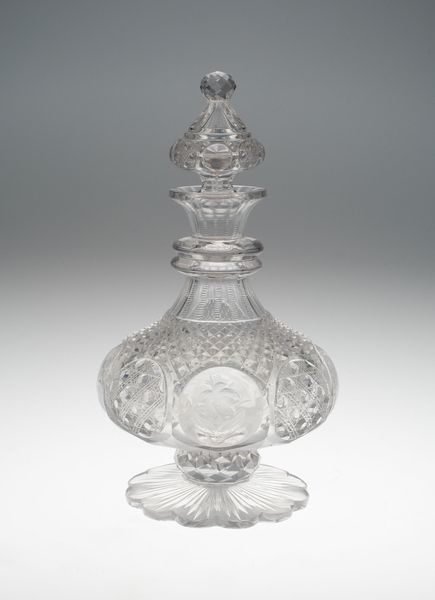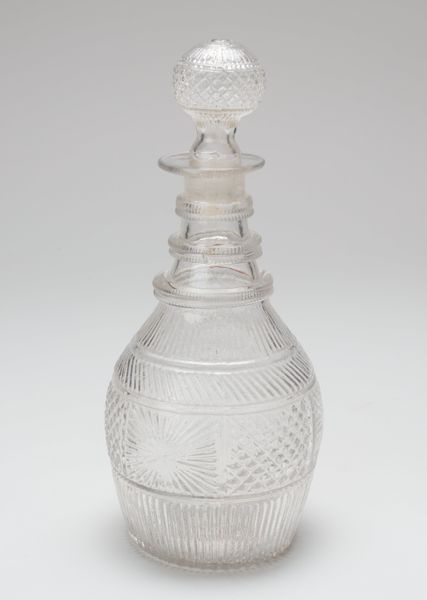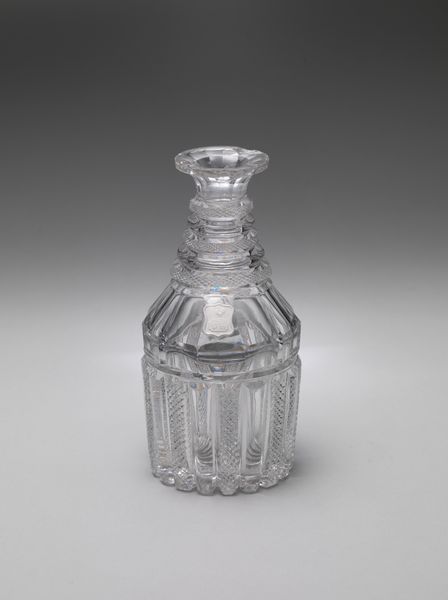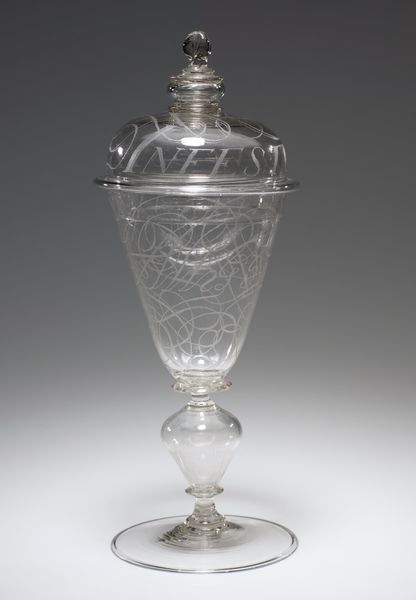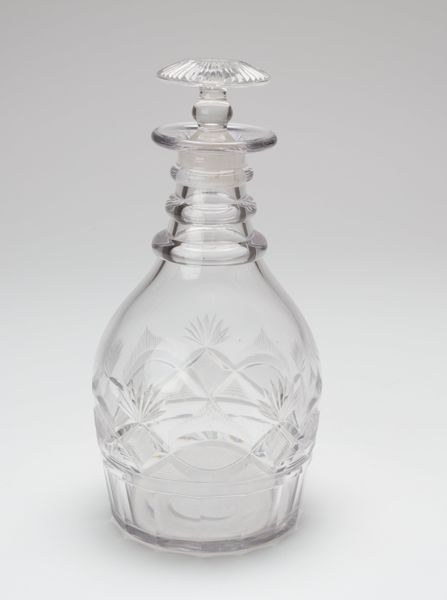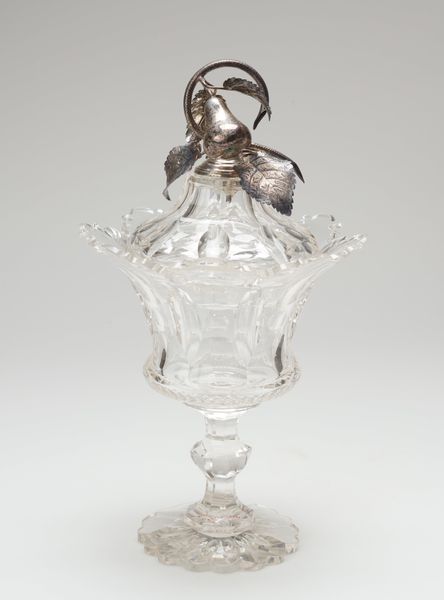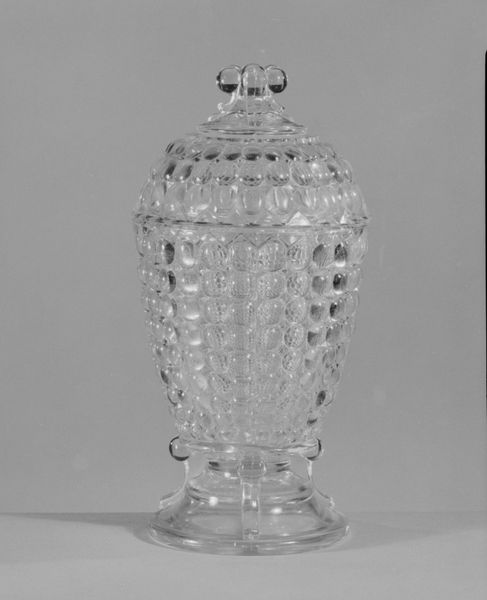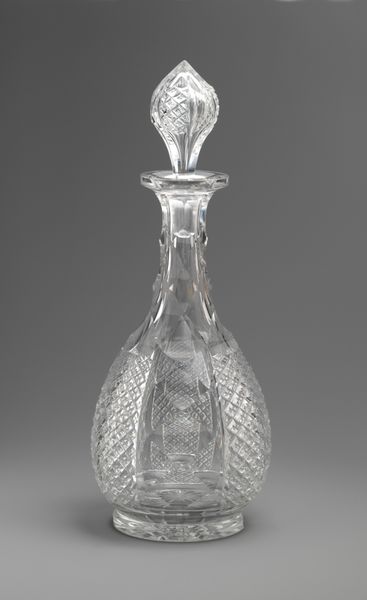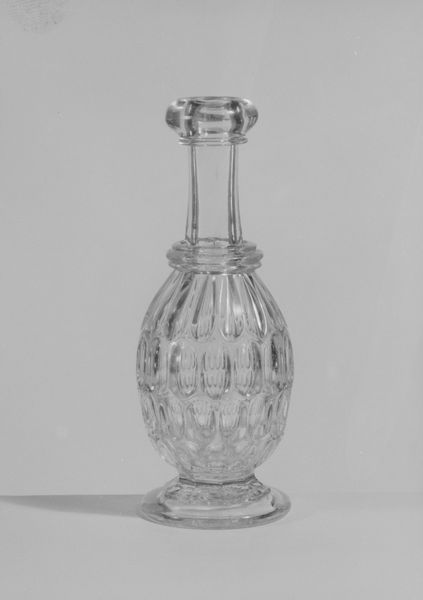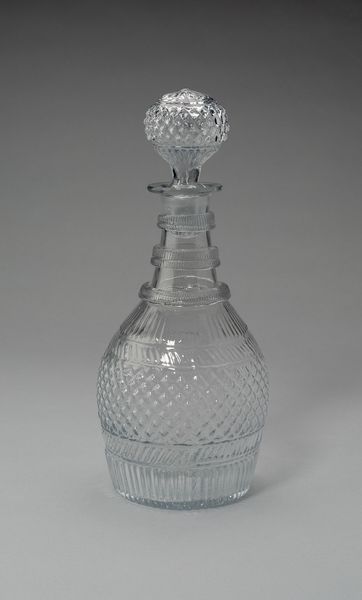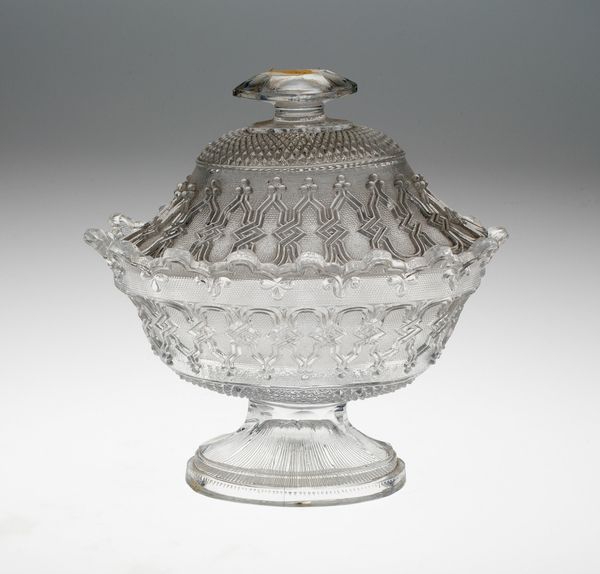
ceramic, glass
#
ceramic
#
glass
#
stoneware
#
ceramic
#
united-states
#
product photography
#
decorative-art
Dimensions: H. 7 3/8 in. (18.7 cm)
Copyright: Public Domain
Curator: Here we have a stunning glass decanter, believed to have been crafted between 1826 and 1835 by Bakewell, Page & Bakewell. Editor: Immediately striking! The cut glass creates a dazzling play of light, and the piece gives off an aura of opulent functionality. It seems sturdy, meant to be used rather than just admired. Curator: Indeed. Bakewell, Page & Bakewell were known for their innovative glassmaking techniques. The intricate cutting wasn’t just decorative. It was a key part of establishing early American glass as desirable among affluent clientele, mimicking fancier European wares. Think about the skilled labor required to achieve such precision. Editor: That labor component interests me greatly. Consider the role this decanter might have played in a burgeoning market economy. Was it specifically for storing and displaying high-end goods, for a consumer culture where display became key? Curator: Precisely. This object sits at an interesting intersection, then: designed and consumed during the era when industrialization and mechanization increasingly impacted artisanal work, the handmade slowly giving way to mass production. The presence of the portrait too invites closer scrutiny in relation to the cultural values being projected. Editor: Yes, I notice the subtle inset portrait, seemingly classical. Is that a figure meant to associate the owner with certain intellectual traditions or societal affiliations? Who would commission such an elaborate item, and what statement did they wish to convey? It almost hints to a neoclassical fascination embedded within a practical drinking vessel. Curator: Exactly! Owning something of this quality certainly spoke of wealth and refinement. Moreover, placing an element from European classicism would signal that this was not an 'un-cultured' nouveau-riche home. This object performed socio-cultural functions. Editor: Reflecting on it now, the decanter exemplifies the material ambitions and artistic aspirations that arose with America’s growing commercial power. Curator: It's a testament to both skilled artisanship and the ways in which material objects can speak volumes about the society from which they emerged.
Comments
No comments
Be the first to comment and join the conversation on the ultimate creative platform.

